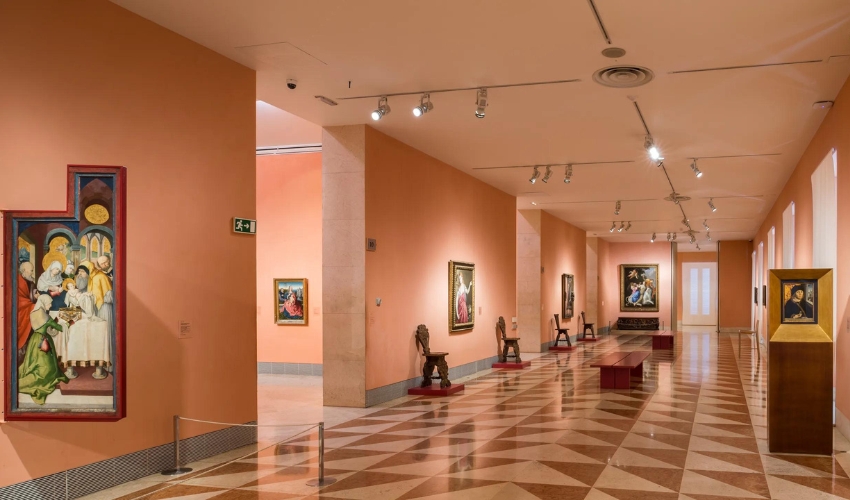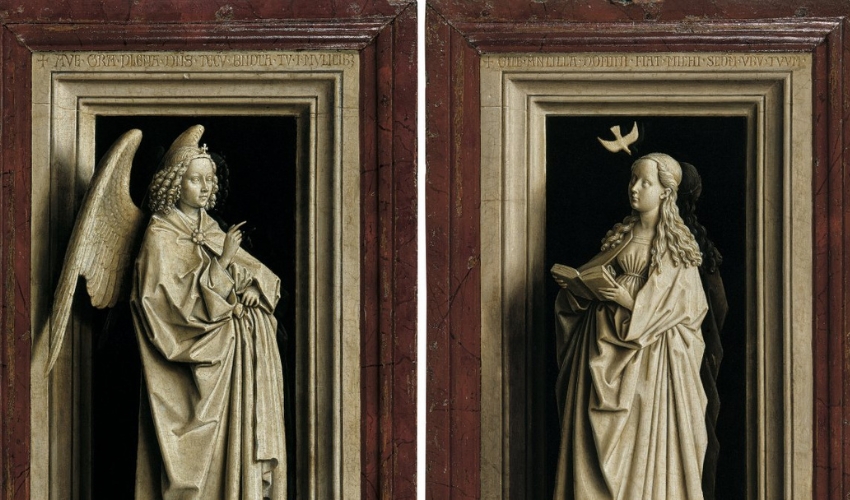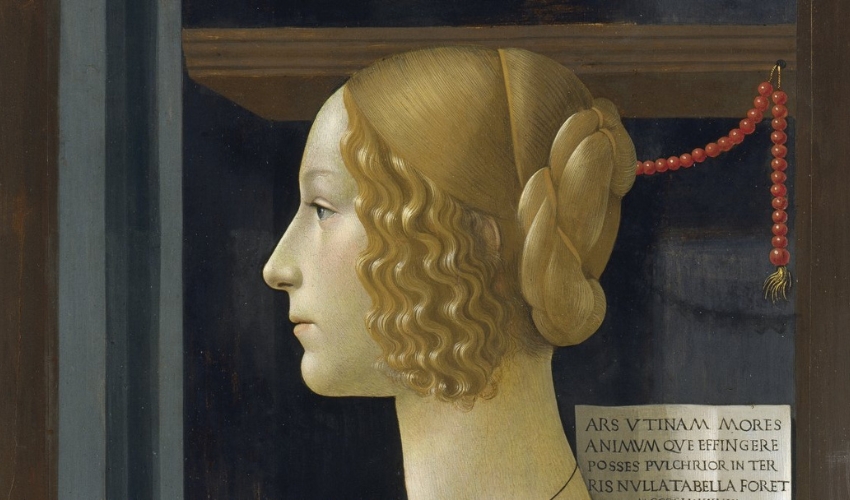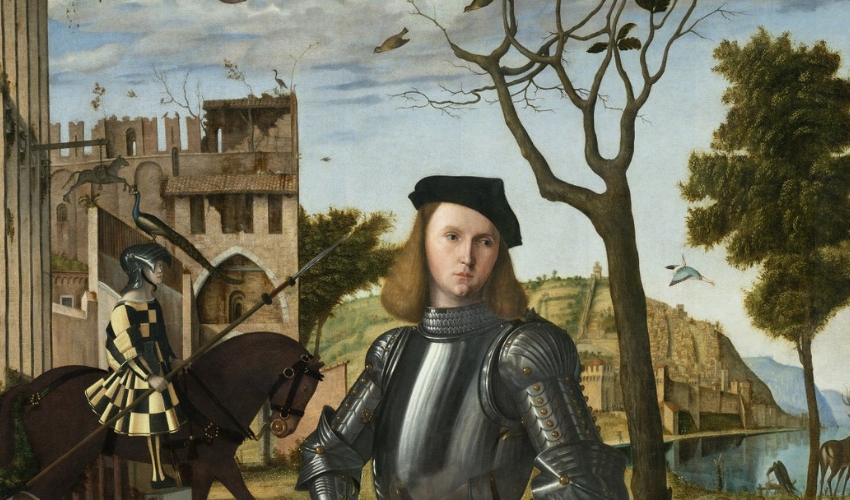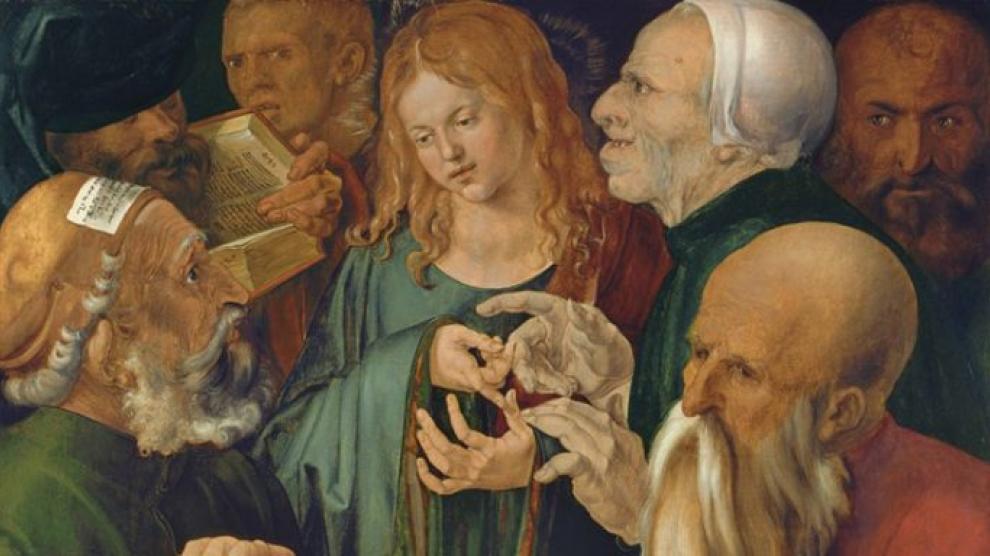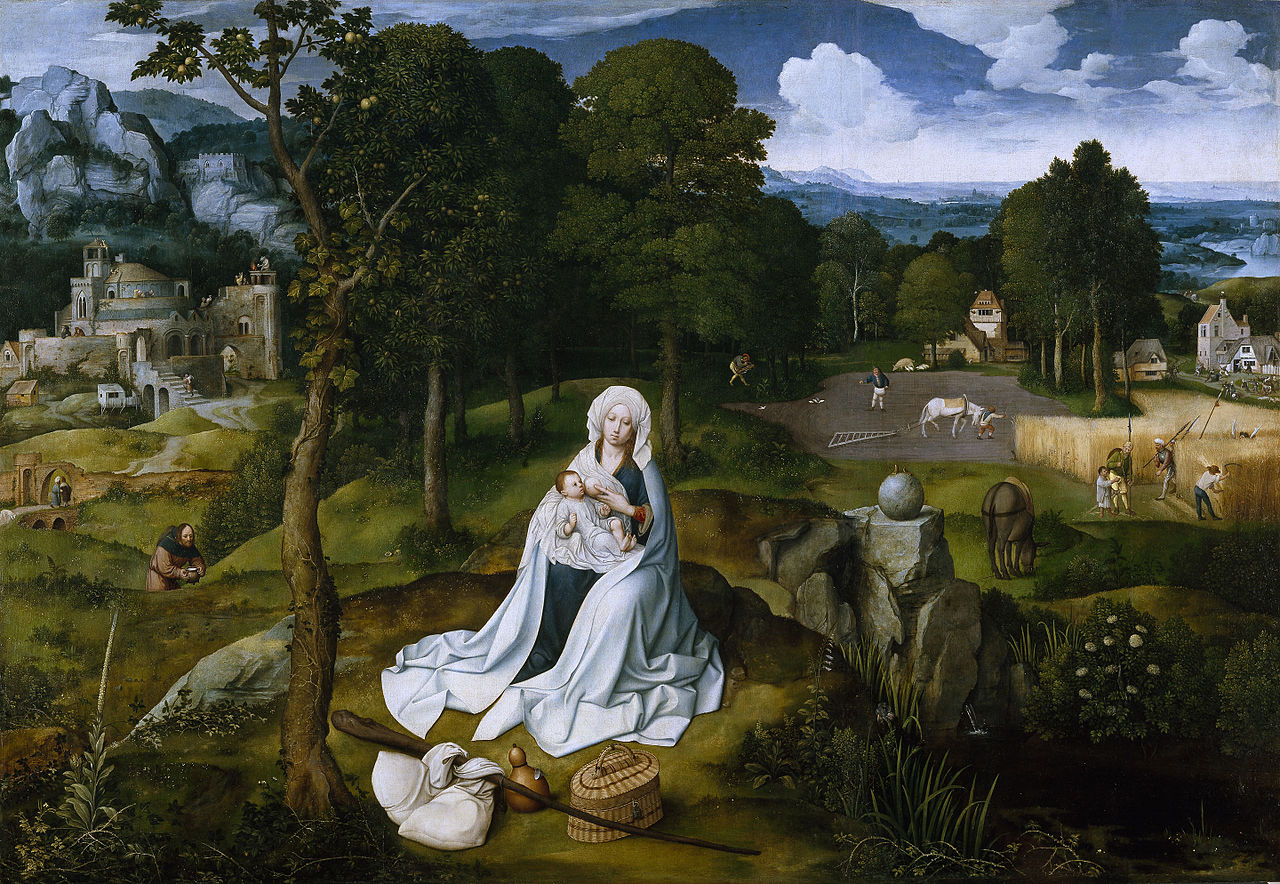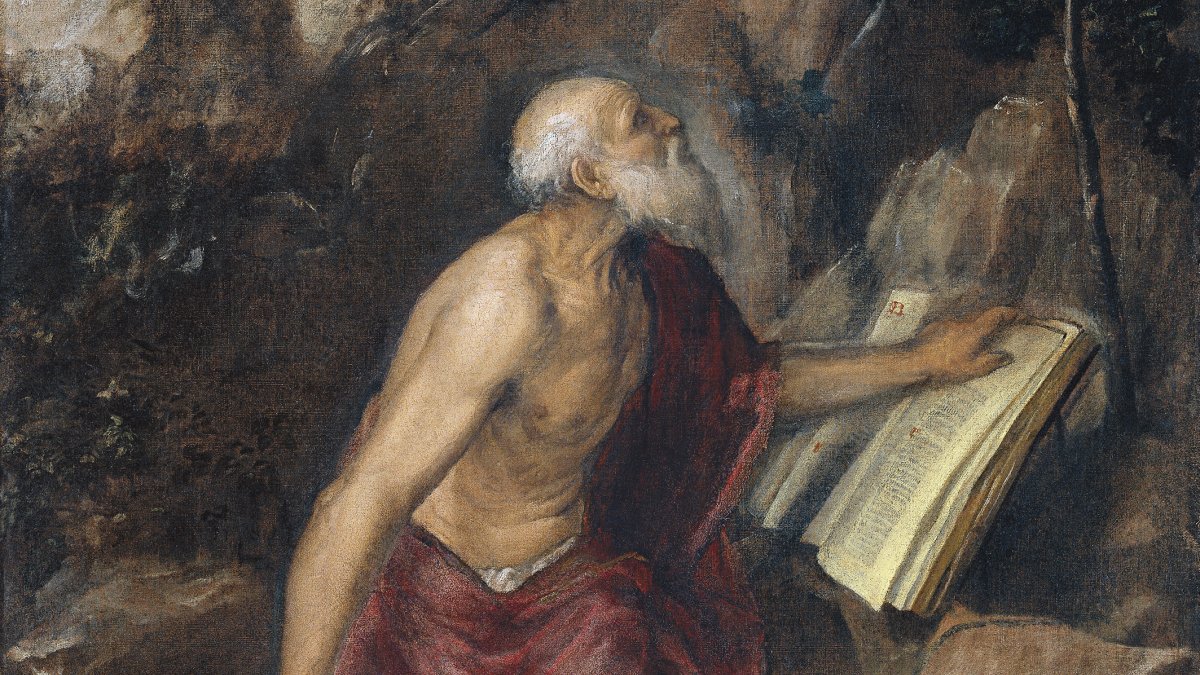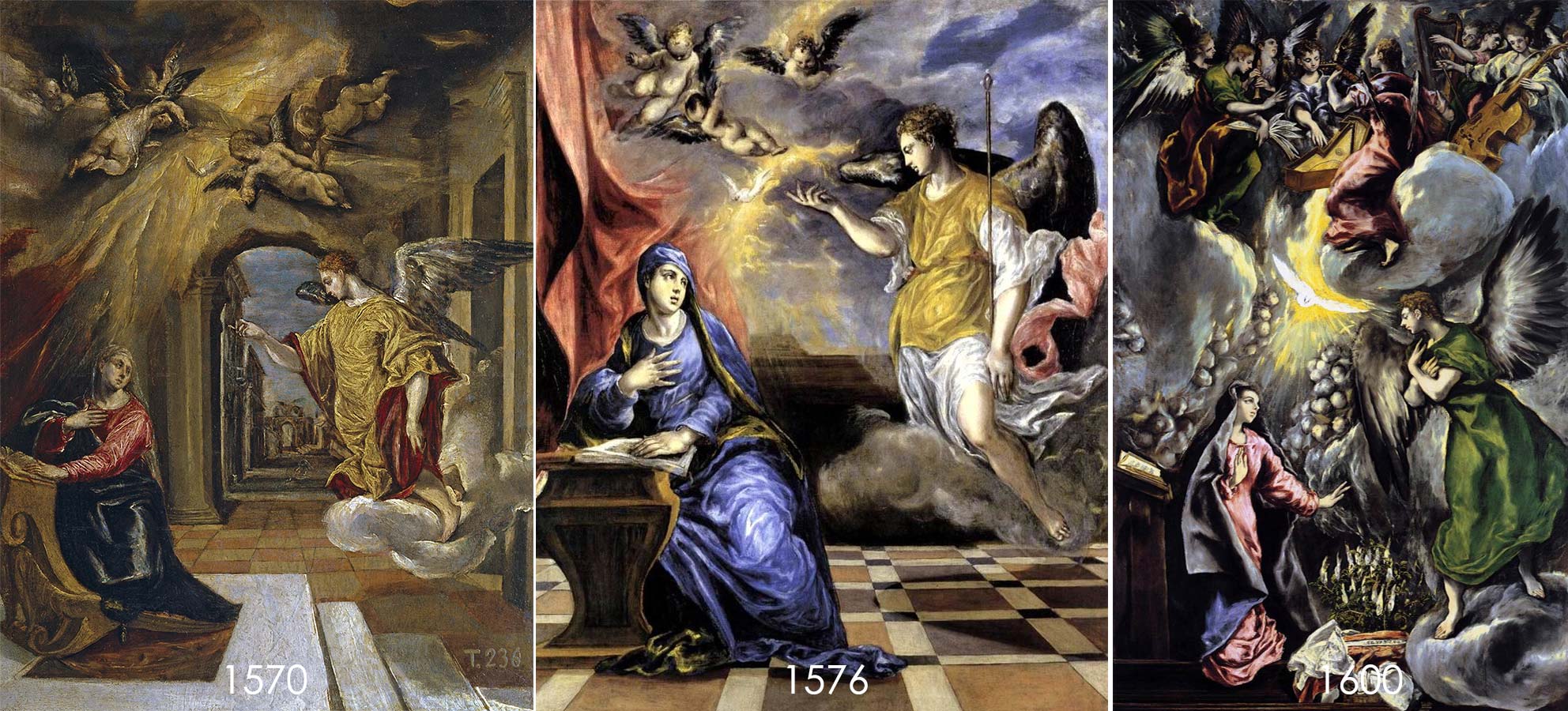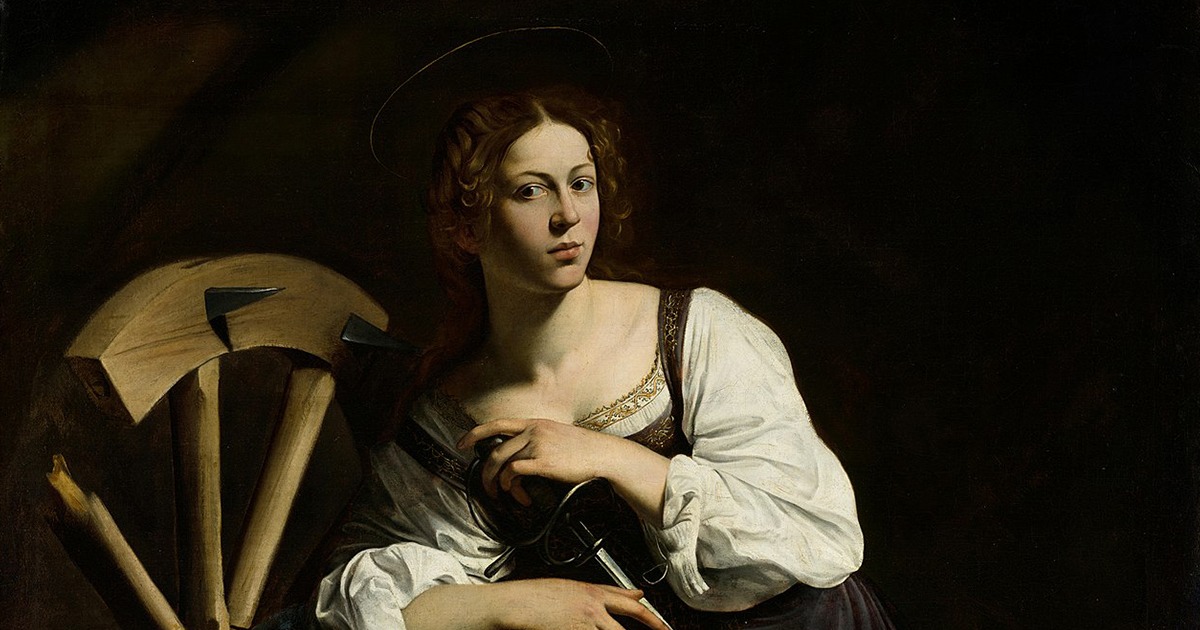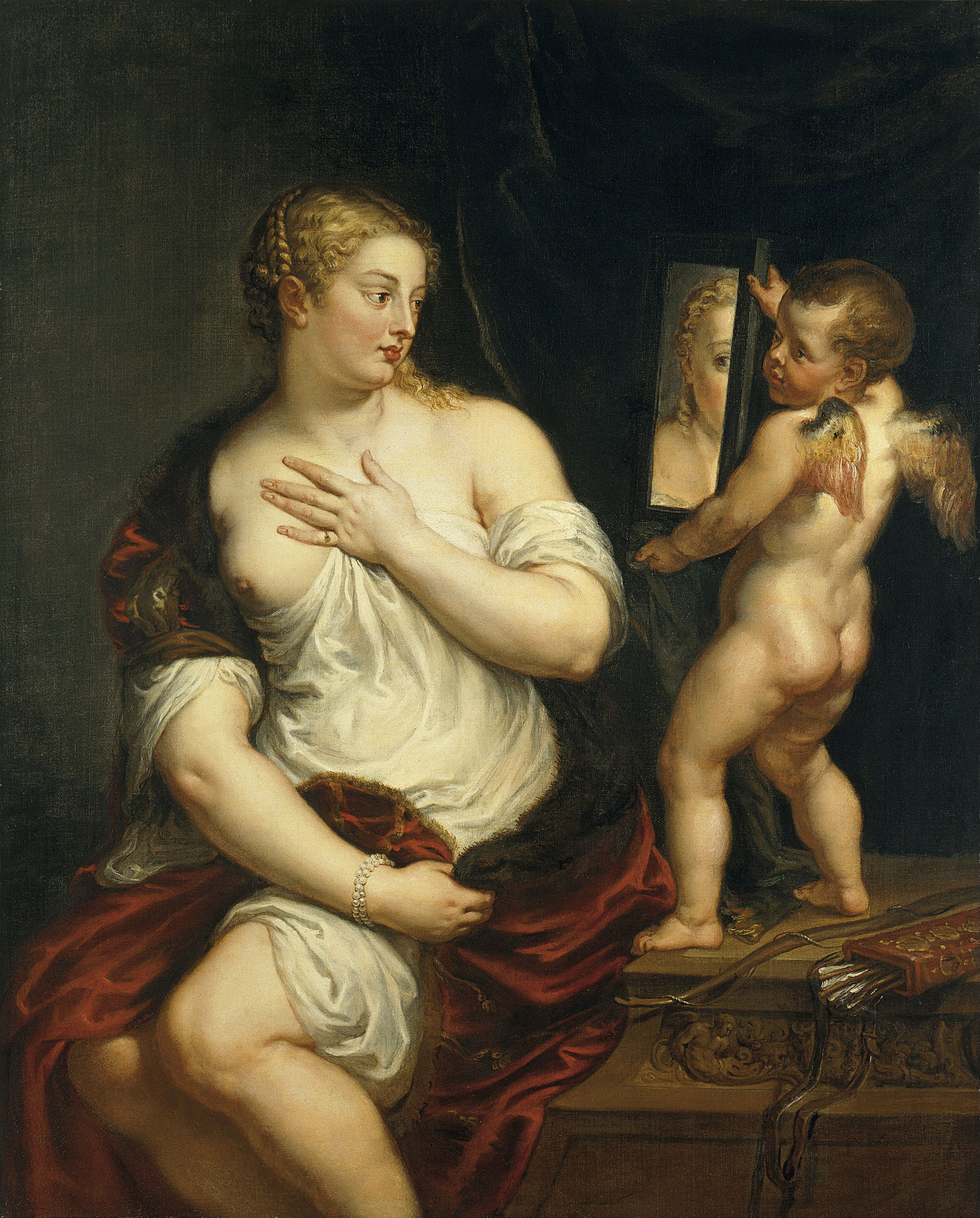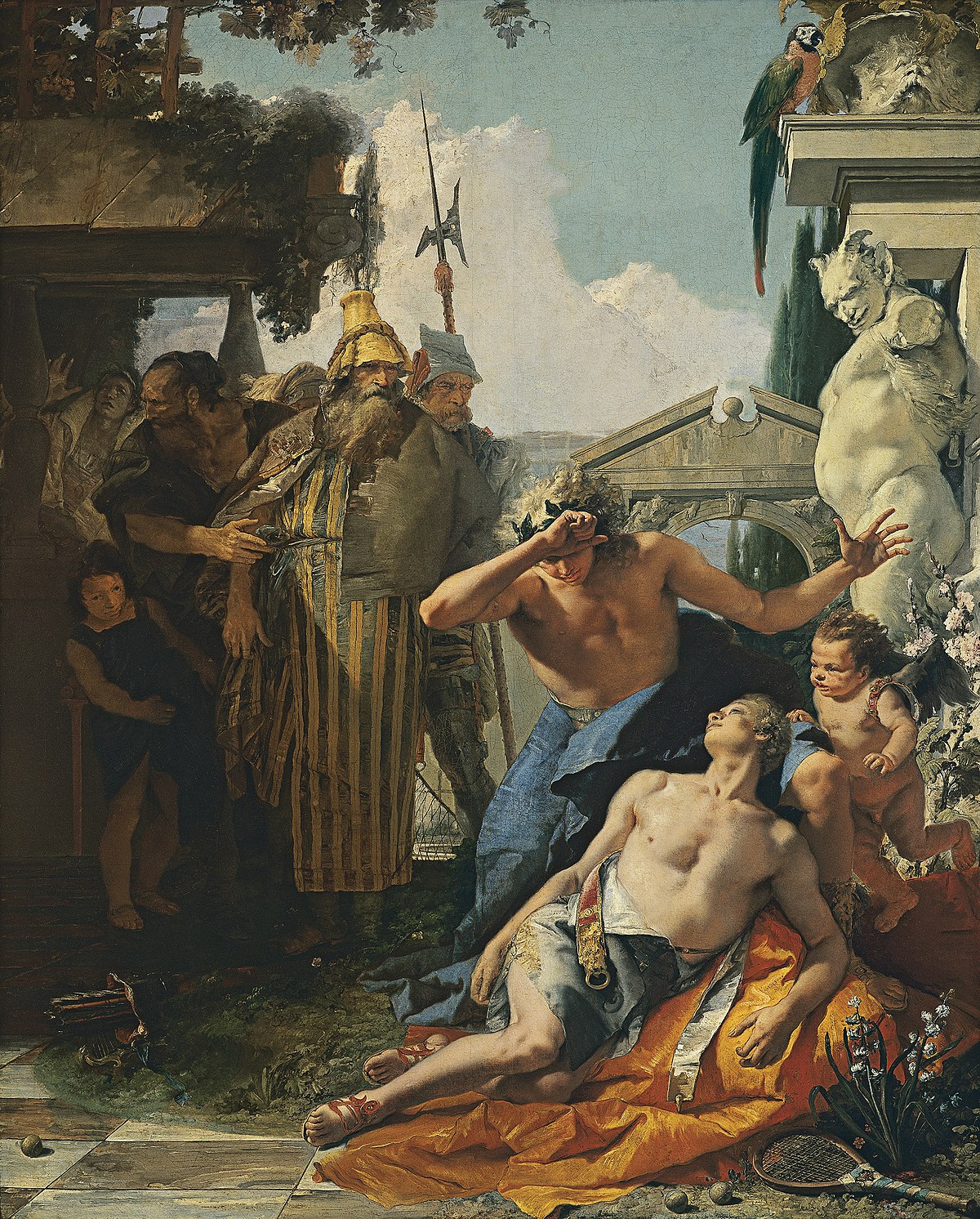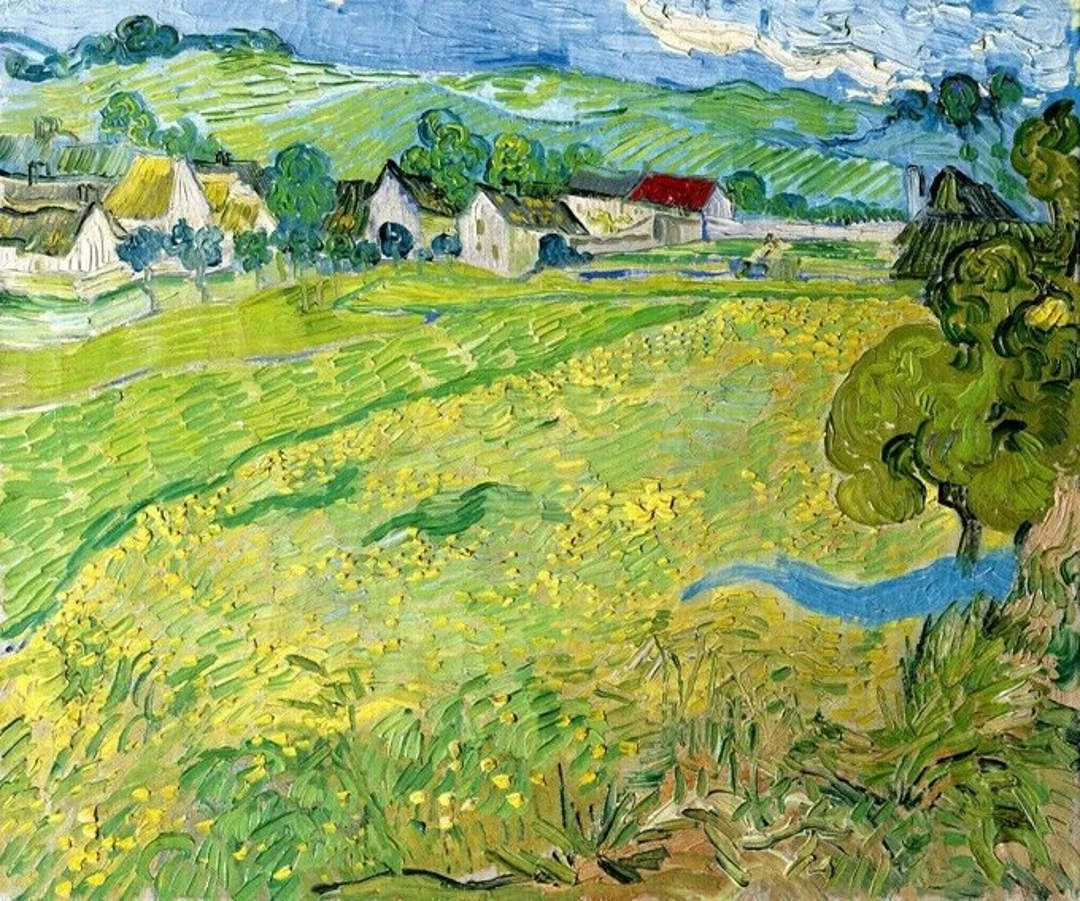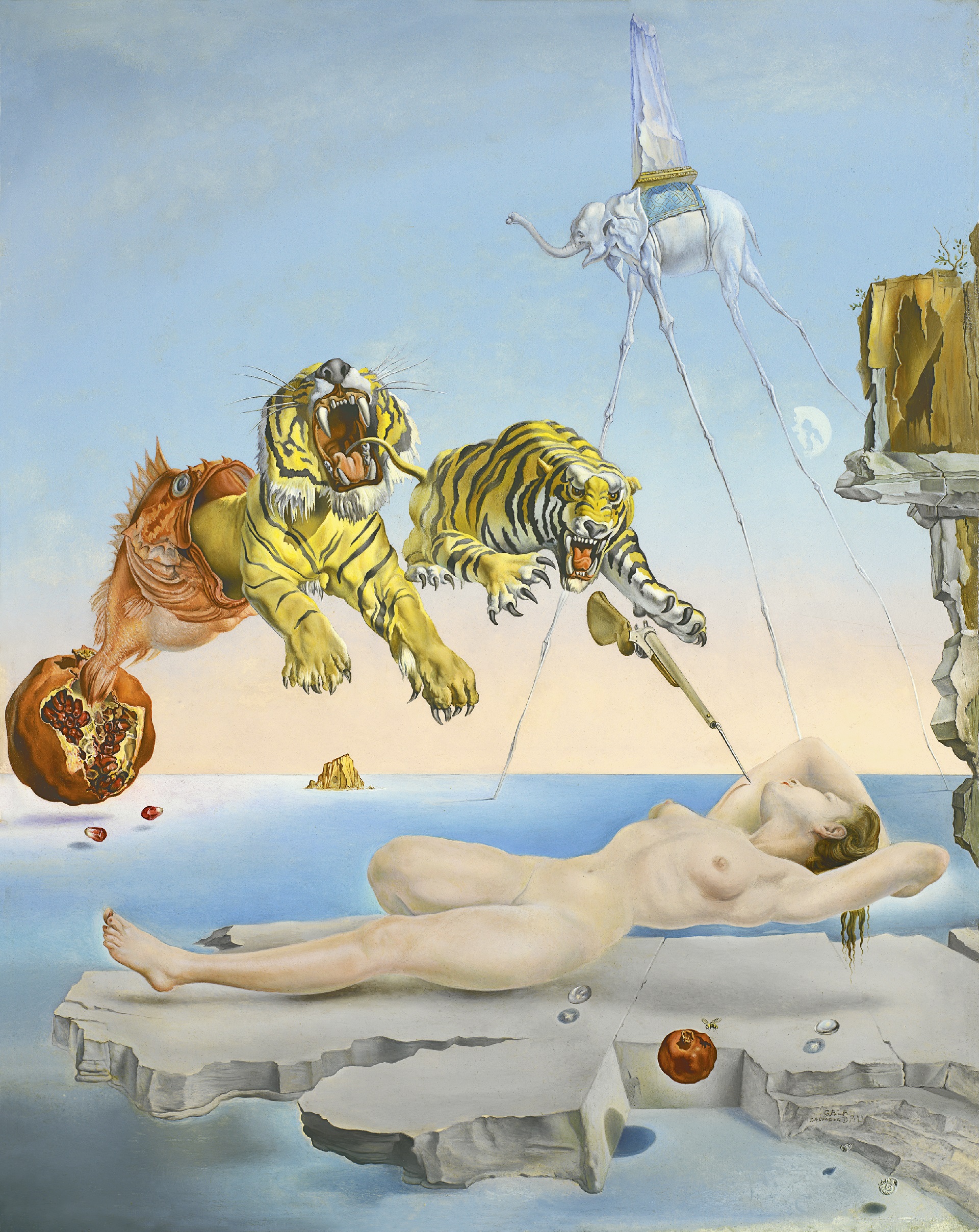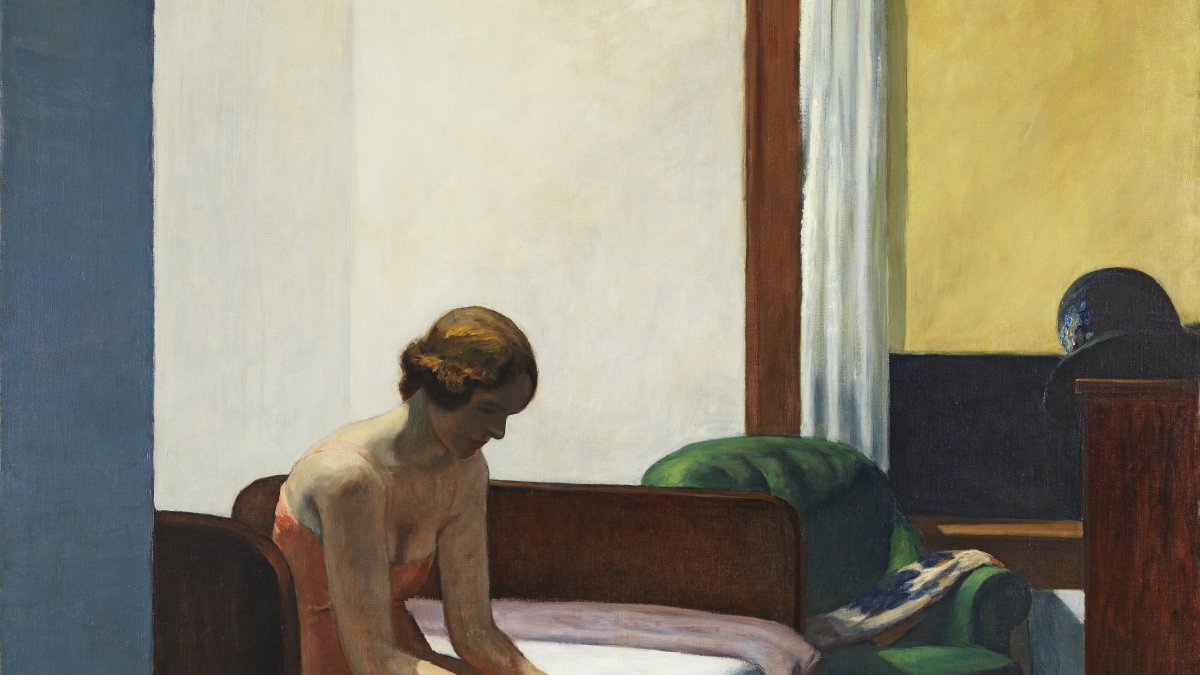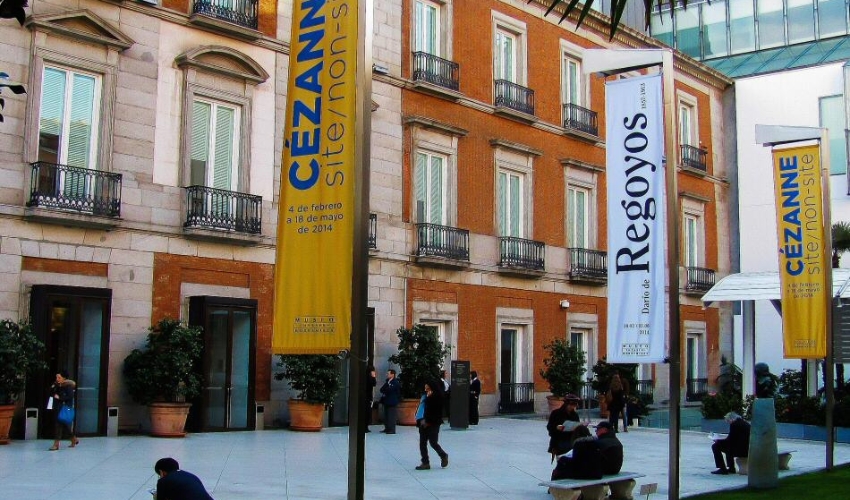
Table of Contents
Best Thyssen-Bornemisza Paintings and Highlights
The Annunciation Diptych, Jan van Eyck, 1433-1435
The Annunciation Diptych, Jan van Eyck, 1433-1435 is one of the finest paintings to be seen in the Thyssen Museum.
It is a recreation of an original that was destroyed in World War II. The Diptych of the Annunciation is a two-panel painting depicting the Virgin Mary receiving the news from the angel Gabriel that she will give birth to Jesus Christ. The work was commissioned by Philip the Good, Duke of Burgundy, as a wedding gift for his wife Isabella of Portugal. The diptych has been extensively restored throughout its life, but still retains all its original brilliance and beauty.
The Diptych of the Annunciation is one of the many attractions of the Thyssen Museum in Madrid (Spain). It is also part of its permanent collection, so you can see it again and again.
Portrait of Giovanna degli Albizzi Tornabuoni, Domenico Ghirlandaio, 1489-1490
The Portrait of Giovanna degli Albizzi Tornabuoni, Domenico Ghirlandaio, 1489-1490 is one of the finest paintings on view at the Thyssen Museum.
The painting depicts Giovanna degli Albizzi Tornabuoni (1443-1503) She was born into a powerful family in Florence, but married into another powerful family when she married Francesco Tornabuoni (1419-1489). Her husband was a banker and politician who was consul of Florence. He also helped found the Hospital of Santa Maria Nuova, which provided medical care for the poor of Florence. The couple had three sons: Bernardo (died 1482), Lorenzo (died 1500) and Giovanni (died 1529).
Giovanna's portrait shows us what life was like for women at the time: wealthy women wore expensive dresses and jewelry, but they were also expected to be virtuous mothers who raised their children well and kept their houses clean. Men like Francesco Tornabuoni expected their wives to help them in business and housework, but they also had many other mistresses.
Young knight in a landscape, Vittore Carpaccio, ca. 1505
A young knight in armor rides a white horse through an idyllic landscape, where the sun is shining and birds are singing. The knight's sword hangs from his waist, ready to be used in battle. The painting, Young Knight in a Landscape, by Vittore Carpaccio (circa 1505), is one of the finest works of art in the Thyssen Museum in Madrid.
The museum, inaugurated in 1992, houses a huge collection of international paintings from the 14th to the 19th centuries. It also includes works in other media such as drawings, prints and sculptures. The museum's permanent collection includes more than 250,000 pieces from around the world, not only European works, but also Asian art and artifacts from ancient Egypt.
Jesus among the Doctors, Albrecht Dürer, 1506
Jesus among the Doctors, Albrecht Dürer, 1506 is one of the best paintings to see at the Thyssen Museum.
This is a painting of a scene from the Bible. It shows Jesus surrounded by doctors who question and test him. The story goes that some doctors wanted to test Jesus' knowledge of medicine and asked him questions about healing the sick. Jesus proved that he knew more than they did.
The art of this painting is really interesting because it is very detailed. You can see all kinds of things in it, like the different facial expressions of each doctor and even the type of clothes they are wearing.
Landscape with others on the flight to Egypt, Joachim Patinir, 1518-1524
The Flight into Egypt, Joachim Patinir, 1518-1524 is one of the finest paintings to be seen in the Thyssen Museum. It is a depiction of the Holy Family fleeing from Herod's soldiers and hiding in a cave.
It is an early Netherlandish painting that is heavily influenced by Italian Renaissance painters such as Raphael and Michelangelo. You can see that influence in the use of perspective and light.
The scene shows Mary holding the baby Jesus as Joseph carries him through a rocky landscape with mountains in the background. She looks at her pursuers as she runs across a river to the entrance of the cave on the other side. There are also two angels flying overhead who seem to be pointing to the cave where they will hide from danger.
The Penitent Saint Jerome, Titian (Tiziano Vecellio), 1575
The Penitent Saint Jerome, Tiziano Vecellio, 1575 is one of the best paintings that can be seen in the Thyssen Museum. The painting is done in oil on canvas and measures 150 x 120 cm. It was painted in 1575.
It depicts the saint Jerome (also known as Saint Jerome) receiving his sentence from the devil, who has just been defeated by the Virgin Mary. He holds a parchment with his written confession.
Jerome is kneeling before her and she is standing behind him, holding a book and parchment in her hands. The Virgin Mary shows him mercy by forgiving him his sins and returning his soul to God. She also gives him permission to preach and live as he wishes after he has repented of his sins.
The Annunciation, El Greco, 1576
The Annunciation, El Greco, 1576 is one of the Best Paintings to see at the Thyssen Museum.
This painting is in the Thyssen Museum in Madrid, Spain. It is a museum that houses many wonderful works of art, including this work by El Greco. The painting depicts Mary being visited by an angel to tell her that she will give birth to Jesus as his mother.
The painting was created in 1576 and has been exhibited in many places since then, including the Louvre and the Metropolitan Museum of Art in New York. This painting shows Mary gazing in awe at the angel who tells her that she will bear Jesus as her son. She is wearing a beautiful dress with gold trim and a blue mantle over her shoulders and arms. The angel is standing over her, holding a small scroll with writing telling Mary that she will be pregnant with the son of God (Jesus).
St. Catherine of Alexandria, Caravaggio, 1598-99
If you're looking for the best art to see at the Thyssen Museum, look no further than St. Catherine of Alexandria, Caravaggio, 1598-99.
This painting is one of Caravaggio's most famous works and has been described as "a pure distillation of what makes him so great". The subject is St. Catherine of Alexandria, a young virgin martyr who was tortured and killed for her faith. She carries a sword in her right hand and an orb in her left. Her pose is reminiscent of classical sculptures depicting strong women in action.
The painting has inspired many other artists over the years; echoes of its style can be seen throughout history. In fact, it is rumored that Michelangelo studied it when he was working on his own version of Saint Catherine.
Today it is a symbol of freedom from persecution and torture - both religious and political - and a reminder that we must all be willing to fight for what we believe in, even when it costs us everything we hold dear.
Venus and Cupid, Peter Paul Rubens, 1606-1611
Venus and Cupid is one of the best paintings that can be seen in the Thyssen Museum. It is a classic by Peter Paul Rubens, painted in 1606-1611. The painting depicts Venus and Cupid, the Roman goddess of love and Cupid, the son of Venus, who was considered a god of desire, affection and sexual attraction. They are seen seated together on a couch, with Cupid holding an arrow in his right hand to indicate that he has just shot it into his mother's heart.
The Death of Jacinto, Giambattista Tiepolo, 1752-1753
The Death of Jacinto, Giambattista Tiepolo, 1752-1753 is one of the most famous paintings on view at the Thyssen Museum.
It is a large work, measuring 3.2 m x 2.5 m, depicting a scene from the Old Testament Book of Maccabees. It shows the moment when Judas Maccabeus, who was fighting against Antiochus IV Epiphanes, discovers that his brother Hyacinthus has died in battle.
Hyacinthus is shown lying on his back, sword still at his side, while Judas kneels beside him, grief-stricken. The painting shows the artist's ability to depict emotion through facial expression and body language: both men weep over the death of their brother and Judas holds his head with one hand while clinging to Hyacinthus' shoulder with the other.
Les Vessenots en Auvers, Vincent van Gogh, 1890
Les Vessenots en Auvers, Vincent van Gogh, 1890 is one of the most famous paintings on view at the Thyssen Museum.
This is a beautiful and striking painting depicting a scene in Auvers-sur-Oise, France. In this painting, you can see an idyllic farm with lush green fields and farmland. The artist painted this picture from the window of his room in the inn where he lived.
Dream provoked by the flight of a bee around a pomegranate a second before waking up, Salvador Dalí, 1944.
Salvador Dalí's 1944 painting Dream Caused by the Flight of a Bee around a Pomegranate is one of the most famous paintings on view at the Thyssen Museum.
The surrealist artist was known for his bizarre paintings, which often included elements that were difficult to understand at first glance. In this case, we are left wondering what exactly is going on in this painting - are we going to get stung by the bee? What's with that strange hole in the center?
In reality, Dalí wanted viewers to experience the same confusion he experienced when he dreamed that bees attacked him in his sleep. This confusion led him to create a masterpiece that remains a challenge even today.
Hotel room, Edward Hopper, 1931
If you visit the Thyssen Museum, you can't miss Hotel Room, Edward Hopper, 1931. This painting is one of the most famous in its collection, and it's easy to see why. It's a dark and imposing painting that captures an intimate moment between two people, but not in the way you'd expect.
The people in this painting are faceless, and only two figures are visible: a man and a woman. They are seated on opposite sides of a bed, their backs to each other. The woman looks out the window, while the man sits with his head lowered and his face buried in his hands.
It's a haunting scene, but there's also something strangely comforting about it: seeing these two people together in such silence makes you think about what your own life would be like if someone were by your side like that: if someone stayed by your side no matter how much time passed or how far apart you grew physically; if someone were by your side through all your ups and downs; if someone loved you no matter what happened or who came into your life next; if someone never left your bedside until they died....
What to see in the Thyssen Bornemisza collection
If you are looking for a museum in Madrid that reflects the history and culture of the city, look no further than the Thyssen Bornemisza. It is a collection of art from all over Europe over several centuries and dates back to Baron Hans Heinrich Thyssen-Bornemisza, an art collector who had an eye for quality.
The museum features works by artists such as Picasso, Rembrandt, Degas and Rubens, and each one is beautiful in its own right. If you are traveling with children, they will especially enjoy seeing Hieronymus Bosch's "Garden of Earthly Delights," which depicts life on Earth, as well as hell and heaven.
The museum also hosts temporary exhibitions that are worth visiting; recent exhibitions have featured artists such as Gerhard Richter and Andy Warhol.
The history of the Thyssen-Bornemisza Museum
Thyssen-Bornemisza, Baron Hans Heinrich von Thyssen-Bornemisza, donated his personal art collection to the Spanish state. He had no desire to profit from his collection, he only wanted to share it with the world.
The museum opened in 1992 and has since become an internationally renowned institution with more than 700 works of art, including paintings by El Greco and Rubens, as well as sculptures by Rodin, Brancusi, Moore and Giacometti.
The museum's holdings are divided into four different collections: The European collection (1200 paintings), the Spanish collection (1100 paintings), the Egyptian collection (500 objects) and the 20th century art collection (500 paintings).
How to pronounce Thyssen Bornemisza
Thyssen Bornemisza is a name that has been passed down from generation to generation of the Thyssen family, which has been in the art world for more than 200 years. The name is pronounced "TEE-sen BORN-uh-miss-ah".
Tickets to the Thyssen Bornemisza Museum
Tickets for the Thyssen Bornemisza Museum are now available. Visit this amazing museum and see their extensive collection of art by some of the world's greatest painters, such as Rembrandt, Rubens and Picasso. You can also visit the garden and see how they build their own houses with Legos.
Tickets cost €13 per person.
Kimo Wegner, offers objective reviews and useful recommendations, His expertise in digital marketing and WordPress allows him to present information in an engaging way. Connect with Kimo at LinkedIn y MejorHogar.es

